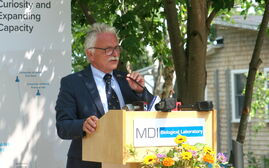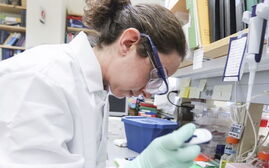Processing Your Payment
Please do not leave this page until complete. This can take a few moments.
- News
-
Editions
-
- Lists
-
Viewpoints
-
Our Events
-
Event Info
- Business Leaders of the Year Reception 2025
- Women's Leadership Forum 2025
- On the Road with Mainebiz in Bethel
- Health Care Forum 2025
- On The Road with Mainebiz in Greenville
- On The Road with Mainebiz in Waterville
- Small Business Forum 2025
- Outstanding Women in Business Reception 2025
- On The Road with Mainebiz in Bath
- 60 Ideas in 60 Minutes Portland 2025
- 40 Under 40 Awards Reception 2025
- On The Road with Mainebiz in Lewiston / Auburn
- 60 Ideas in 60 Minutes Bangor 2025
Award Honorees
- 2025 Business Leaders of the Year
- 2024 Women to Watch Honorees
- 2024 Business Leaders of the Year
- 2023 NextUp: 40 Under 40 Honorees
- 2023 Women to Watch Honorees
- 2023 Business Leaders of the Year
- 2022 NextUp: 40 Under 40 Honorees
- 2022 Women to Watch Honorees
- 2022 Business Leaders of the Year
-
-
Calendar
-
Biz Marketplace
- News
- Editions
- Lists
- Viewpoints
-
Our Events
Event Info
- View all Events
- Business Leaders of the Year Reception 2025
- Women's Leadership Forum 2025
- On the Road with Mainebiz in Bethel
- Health Care Forum 2025
- On The Road with Mainebiz in Greenville
- + More
- On The Road with Mainebiz in Waterville
- Small Business Forum 2025
- Outstanding Women in Business Reception 2025
- On The Road with Mainebiz in Bath
- 60 Ideas in 60 Minutes Portland 2025
- 40 Under 40 Awards Reception 2025
- On The Road with Mainebiz in Lewiston / Auburn
- 60 Ideas in 60 Minutes Bangor 2025
- - Less
Award Honorees
- 2025 Business Leaders of the Year
- 2024 Women to Watch Honorees
- 2024 Business Leaders of the Year
- 2023 NextUp: 40 Under 40 Honorees
- 2023 Women to Watch Honorees
- 2023 Business Leaders of the Year
- + More
- 2022 NextUp: 40 Under 40 Honorees
- 2022 Women to Watch Honorees
- 2022 Business Leaders of the Year
- Nomination Forms
- Calendar
- Biz Marketplace
Commentary: We're seeing a remarkable moment in Maine’s bioscience community
 Courtesy photo
Hermann Haller
Courtesy photo
Hermann Haller
Maine’s bioscience community is working overtime to raise its profile in the world of life sciences. And that is coinciding with a remarkable moment in biology, technology and medicine.
Maine boasts a unique array of scientific research and education institutions, including MDI Bio Lab, whose roots reach back a century and more. Now they are forming new alliances, creating leading-edge technologies and training a new generation of workers and leaders who will advance the cause of improving human health.
In short, Maine is open for science. A report sponsored by the Bioscience Association of Maine shows life science jobs here grew by 42% between 2016-21, to more than 9,500. Average pay rose to $108,000 a year, the fastest and greatest such growth in New England. At MDI Bio Lab our workforce has grown from 73 to 113 over a decade.
Yet in the past two years some jobs that were quickly created in Maine to serve pandemic-driven medical needs have faded just as quickly. It’s important now to stabilize the sector and find new ways to fuel its growth.
Because this is an extraordinary period in biomedical science. Maine’s scientific community and its friends are harnessing our small state’s collaborative energy to seize the day.
MDI Bio Lab, for instance, supported the University of Maine’s successful bid this year to secure an $11 million National Institutes of Health award for advanced research in the molecular mechanics of muscle growth, regeneration and aging. Five innovative young scientists, including one of ours and four at the university, will lead research groups whose discoveries could help us all live longer and more productive lives.
With the aid of more than $12 million in NIH funding, MDI Bio Lab leads a network of 14 research and education institutions in Maine, including most of the UMaine campuses, that provides faculty support, scientific hardware and hands-on training to thousands of undergraduates. It’s called the Maine INBRE network, and 90% of its enrollees have gone on to careers or advanced degrees in medical and other scientific fields.
Twenty-one percent of them stayed in Maine to pursue those dreams — a down payment of nearly 500 people to add to the workforce this state will need to grow a bigger bioscience footprint.
MDI Bio Lab is also working closely with a major new player in Maine’s scientific ecosystem, the Roux Institute at Northeastern University, recently signing a collaborative agreement for research and training with state-of-the-art biotech tools that will help to keep our workforce globally competitive.
Our entrepreneurial subsidiary, MDI Bioscience, is working with the Bigelow Laboratory for Ocean Sciences’ National Center for Marine Algae and Microbiota, in East Boothbay. That project will screen Bigelow Laboratory’s vast library of marine organisms for molecules with medicinal properties: opening up nature’s untapped trove of pharmaceutical potential.
Between 2017 and 2021, the NIH awarded more than a half-billion dollars to non-profit research projects in Maine, with the Jackson Laboratory, Maine Health and MDI Bio Lab the biggest recipients. Last year, Bigelow Laboratory won a $12 million federal award for a new education and innovation center — support that built off philanthropy by Maine’s Harold Alfond Foundation and others, highlighting the central role of private giving.
Other small states, such as Kentucky and Rhode Island, have enacted policies and made investments to expand the life sciences sector and use it as an economic engine.
Many in our high-paying field are eager to put Maine on an equal footing. We are confident that expanded collaboration on this scientific journey will produce real benefits for our state and for humanity.
About the author
Dr. Hermann Haller is president of MDI Bio Lab on Mount Desert Island.














0 Comments